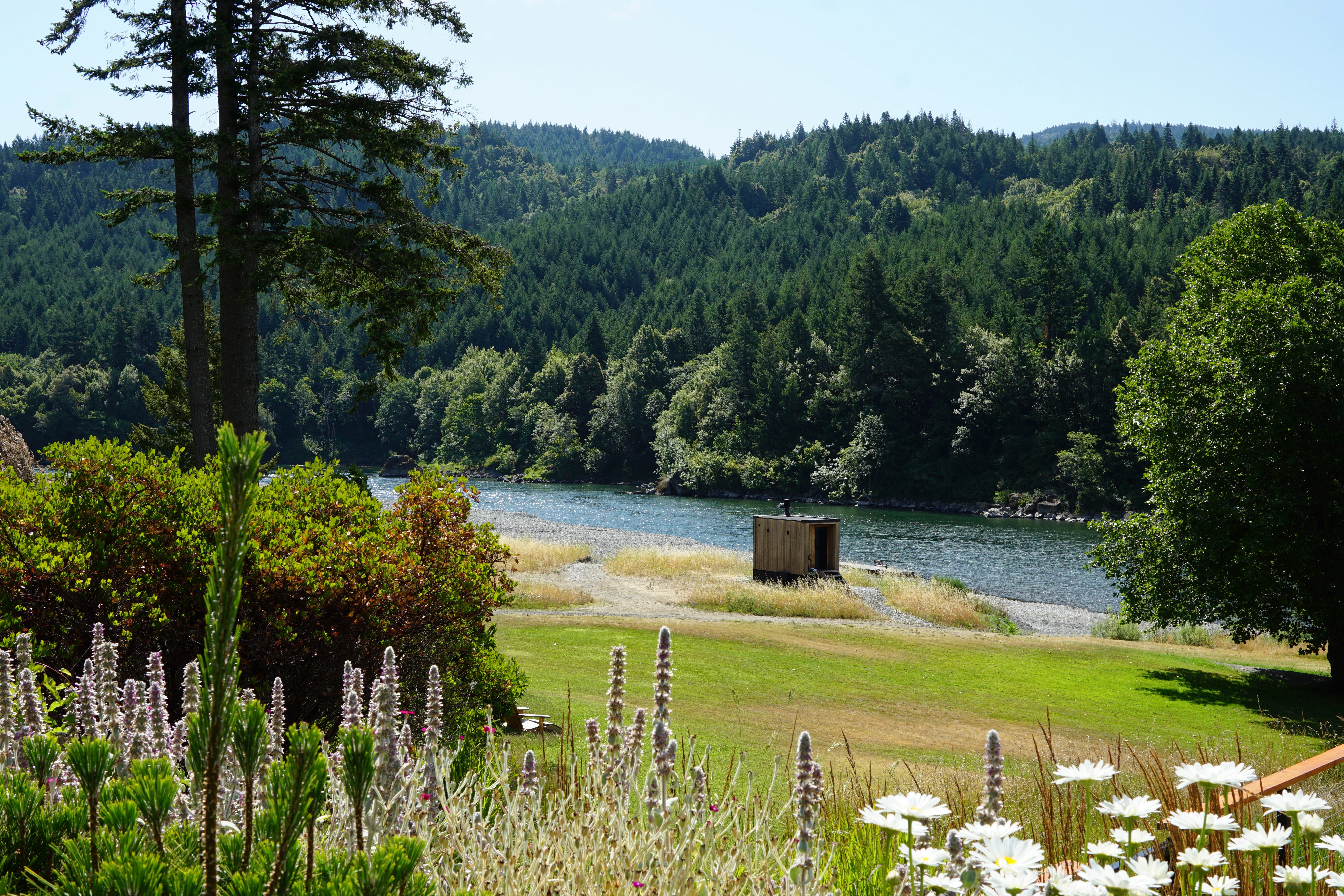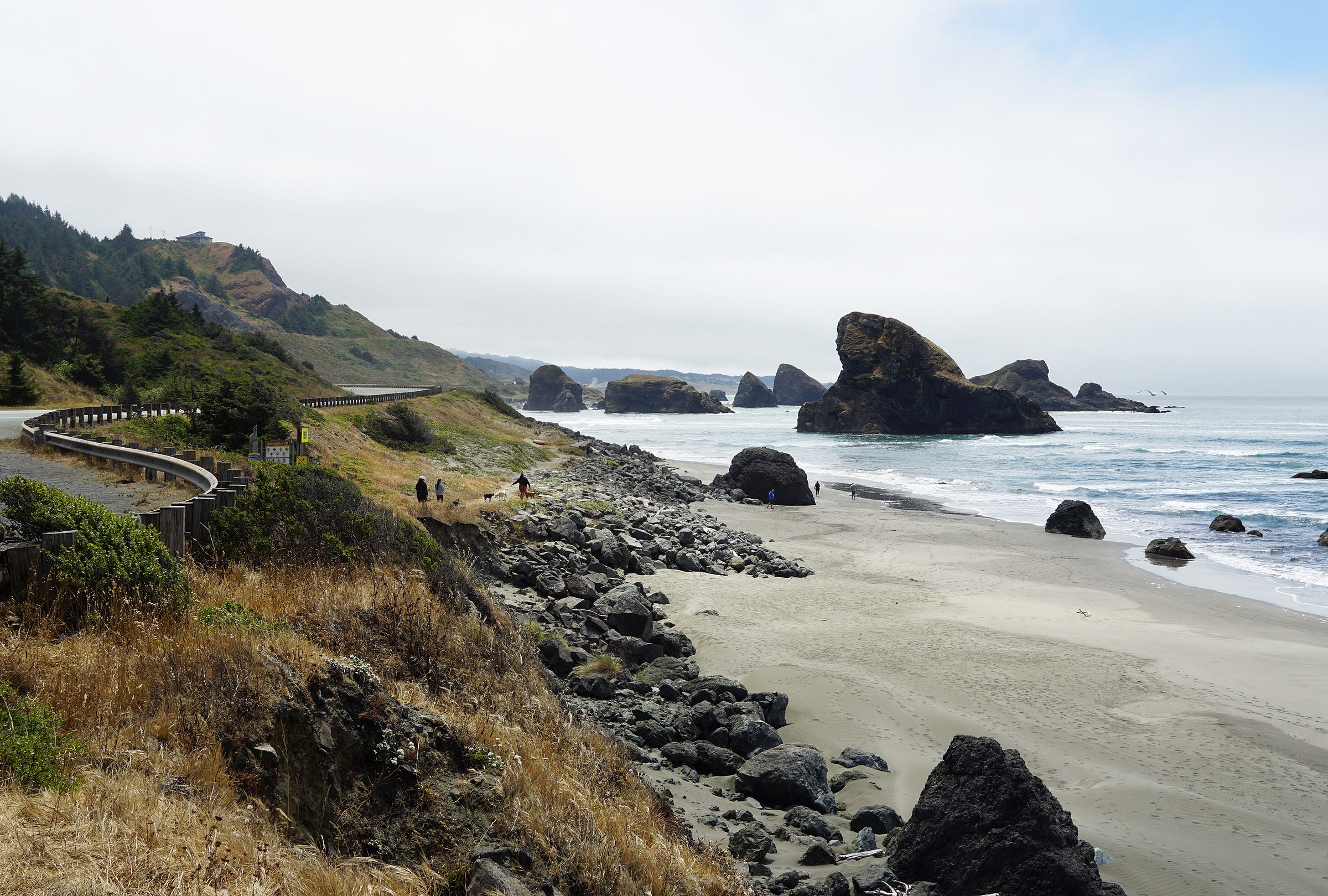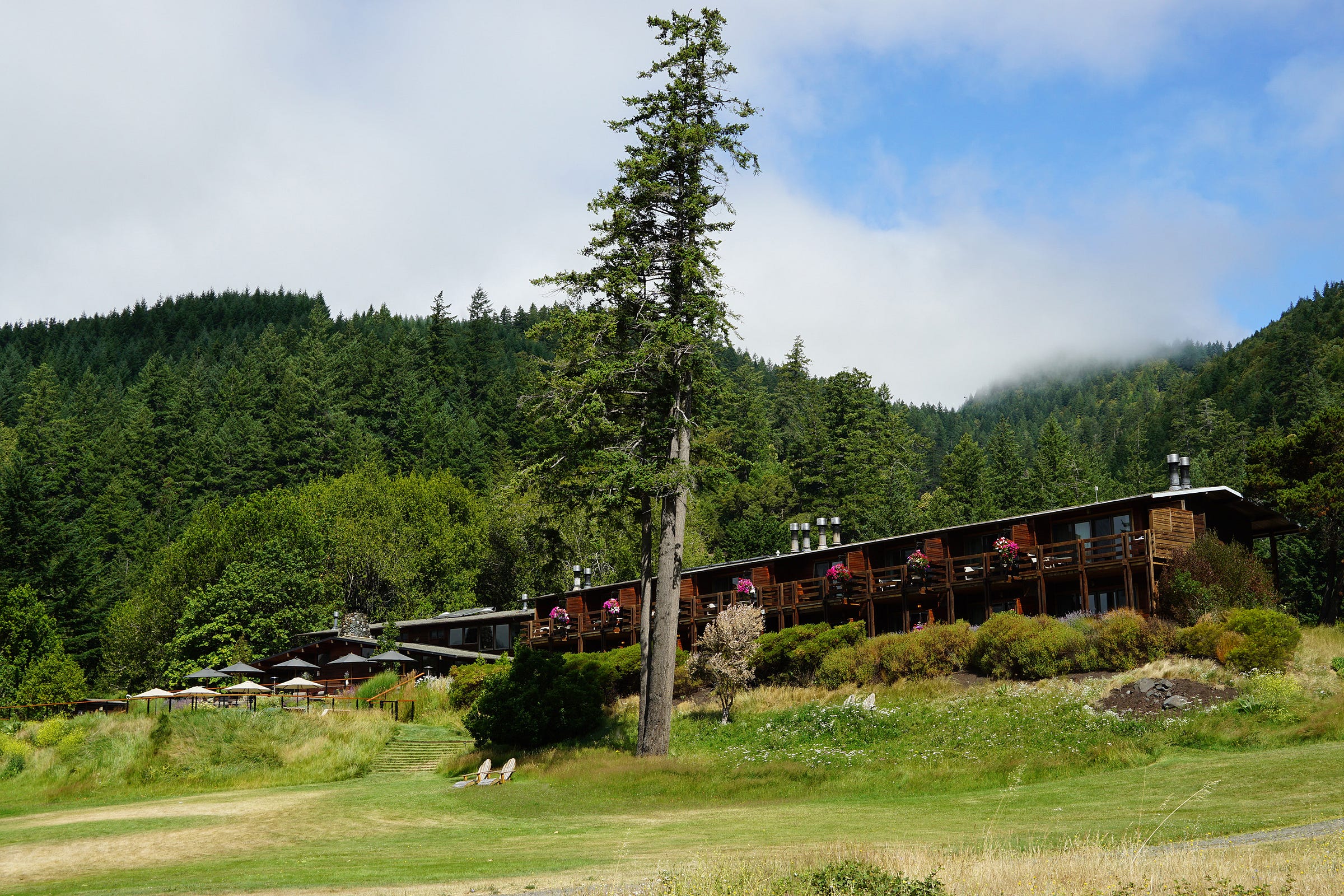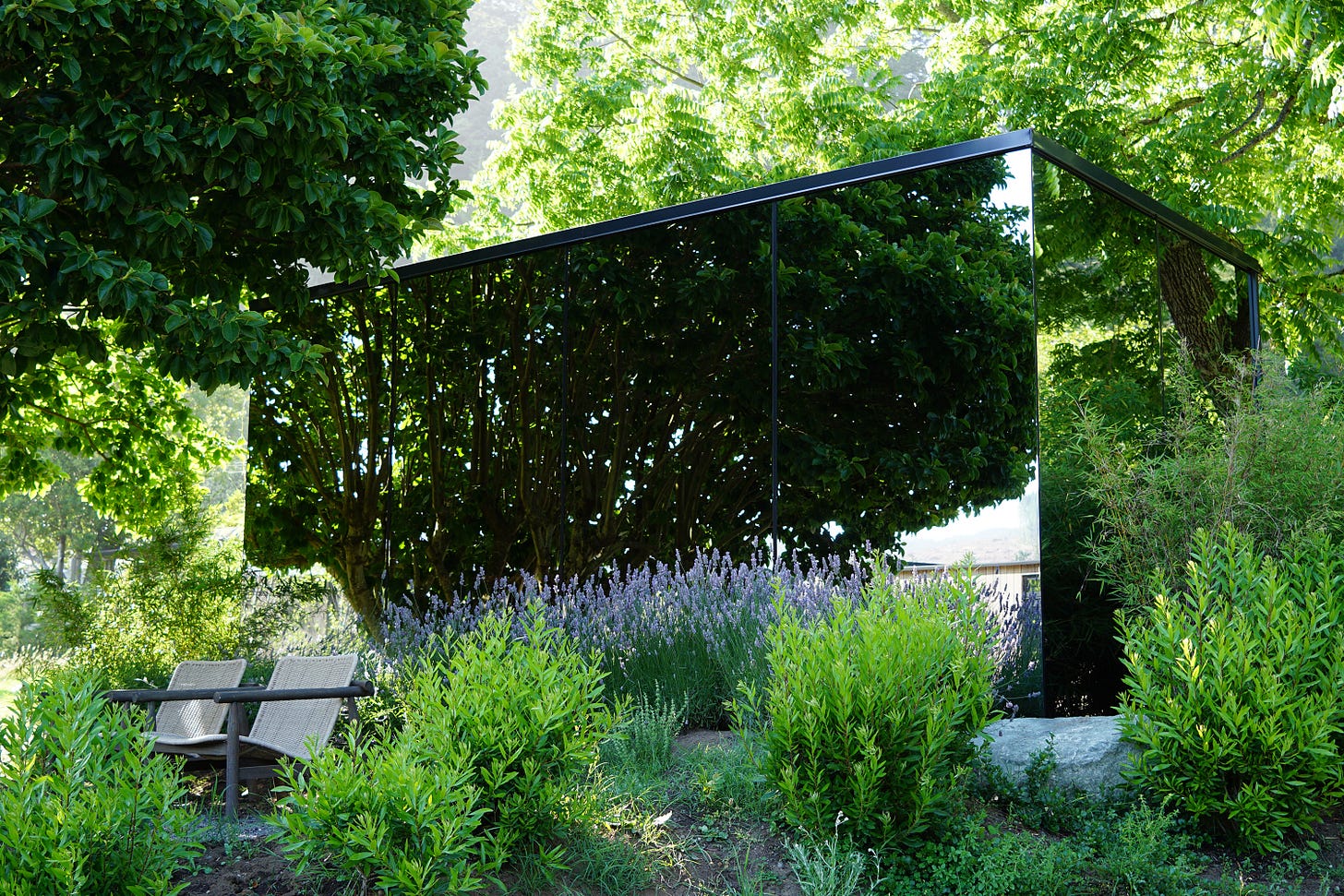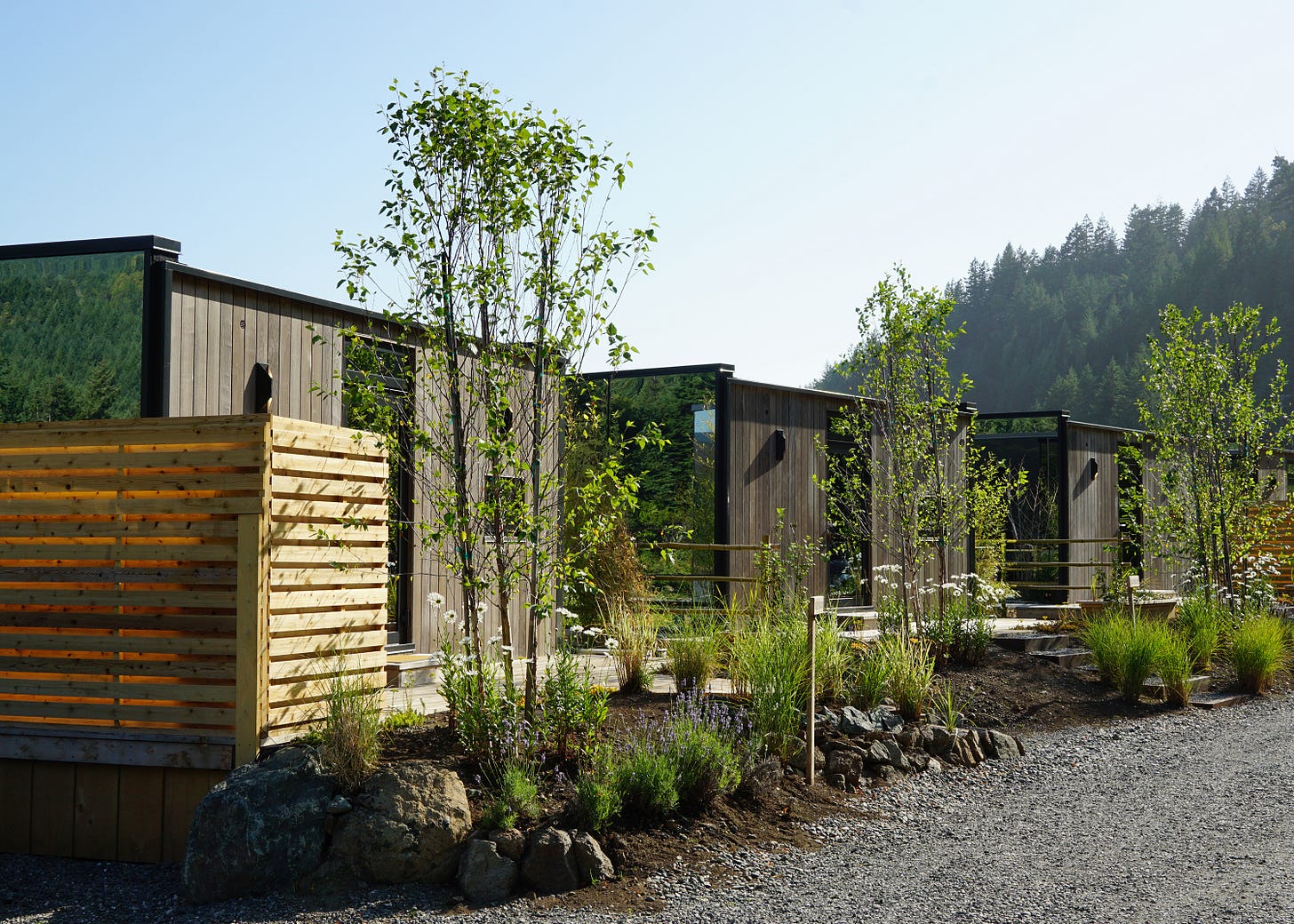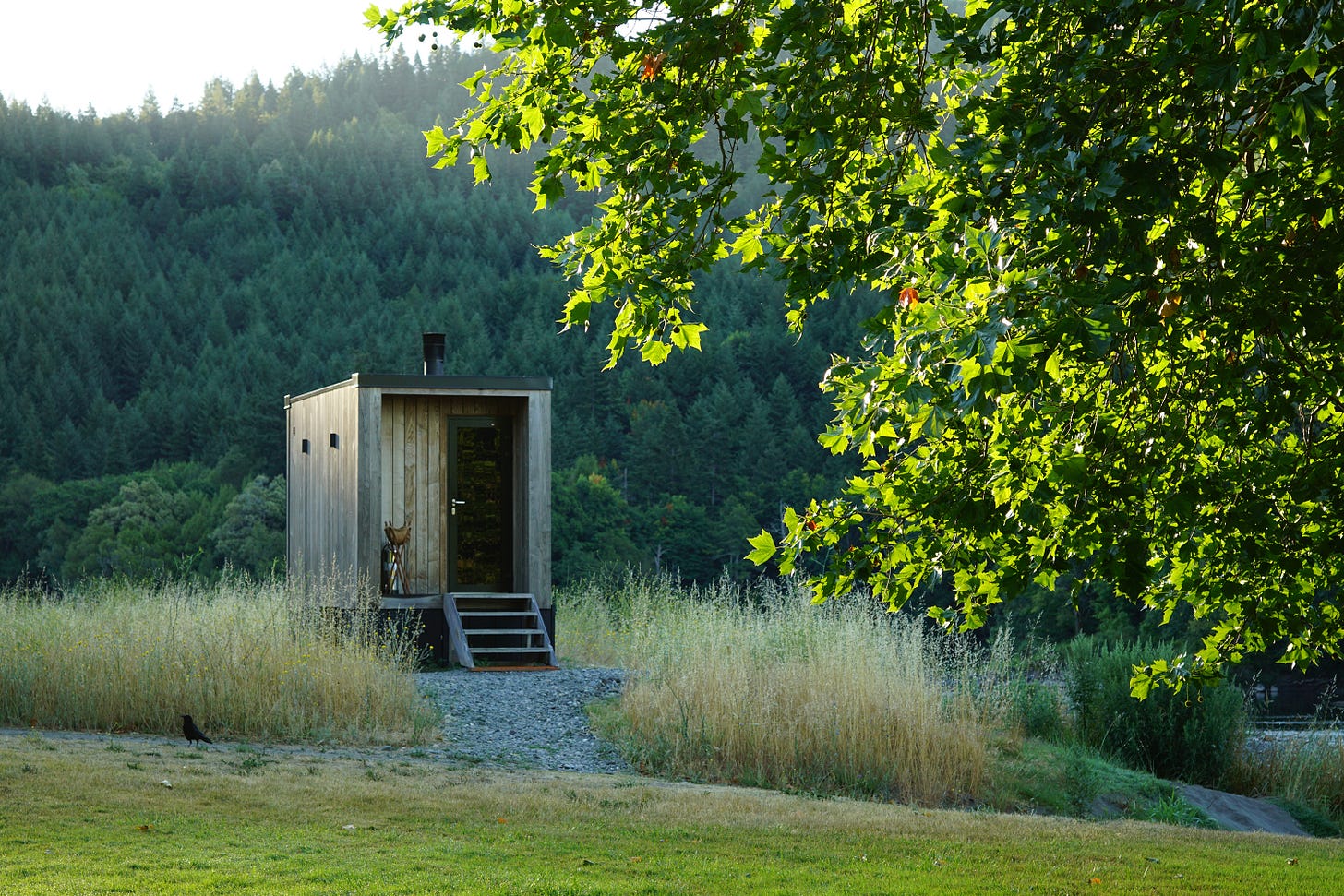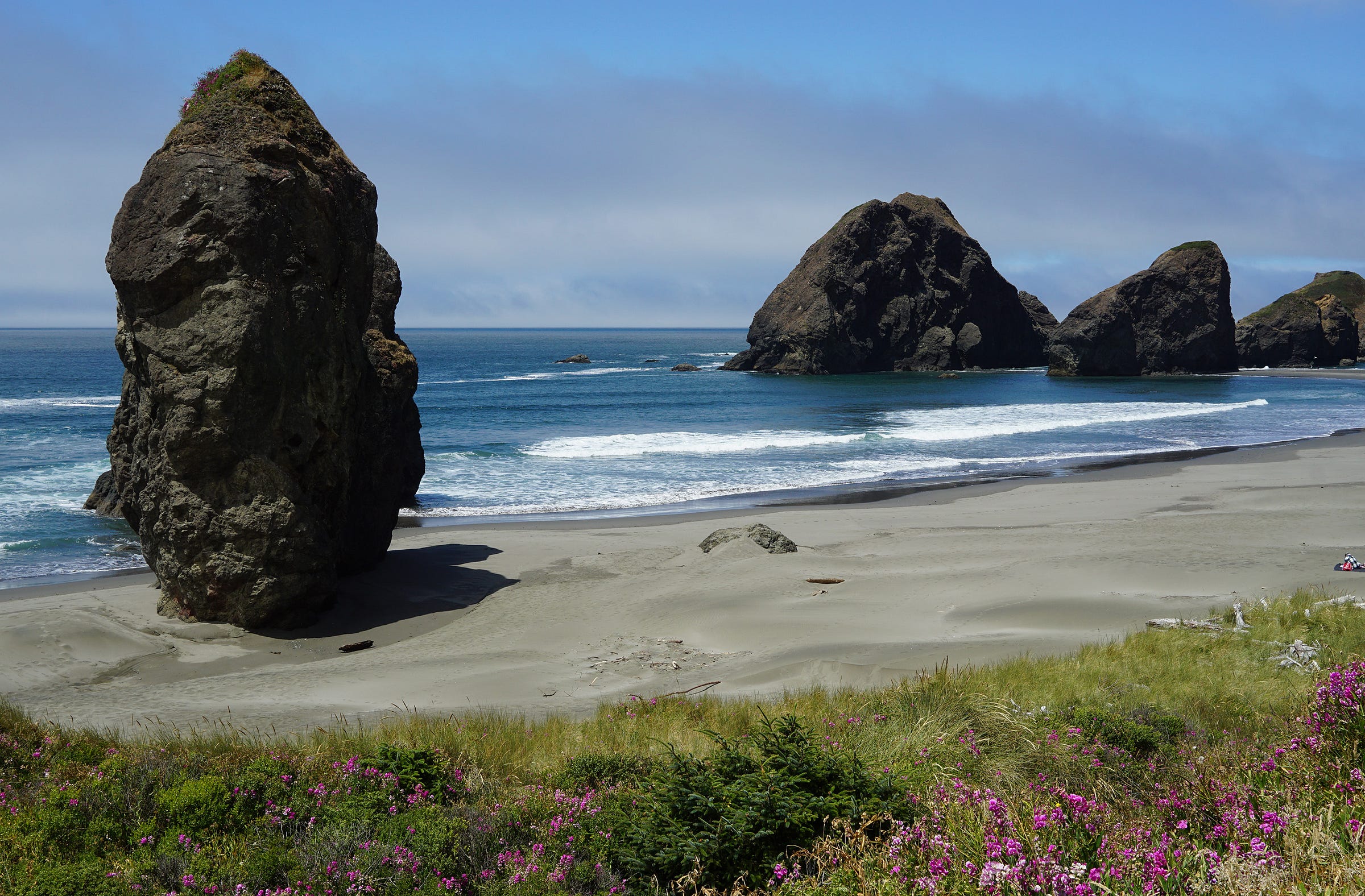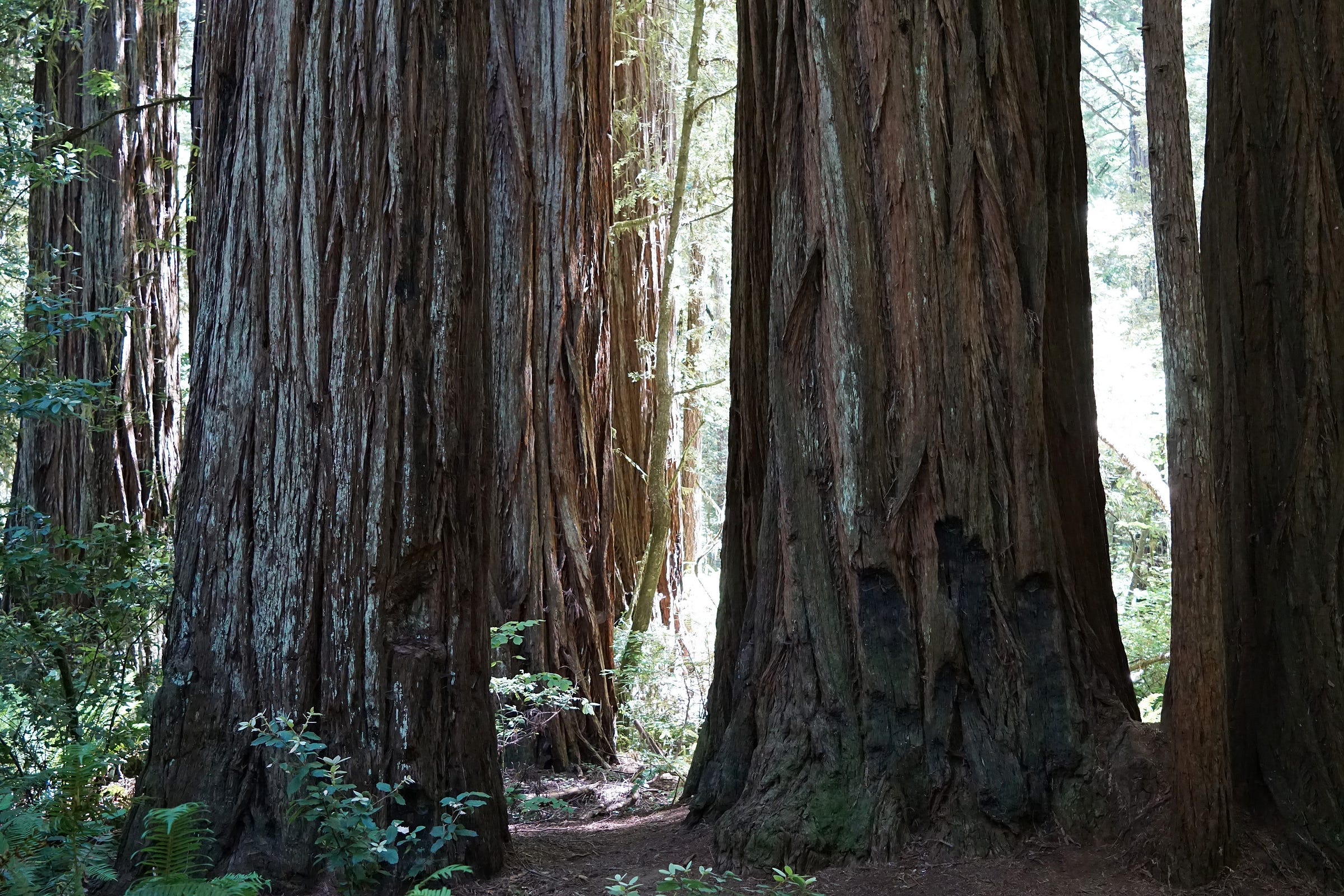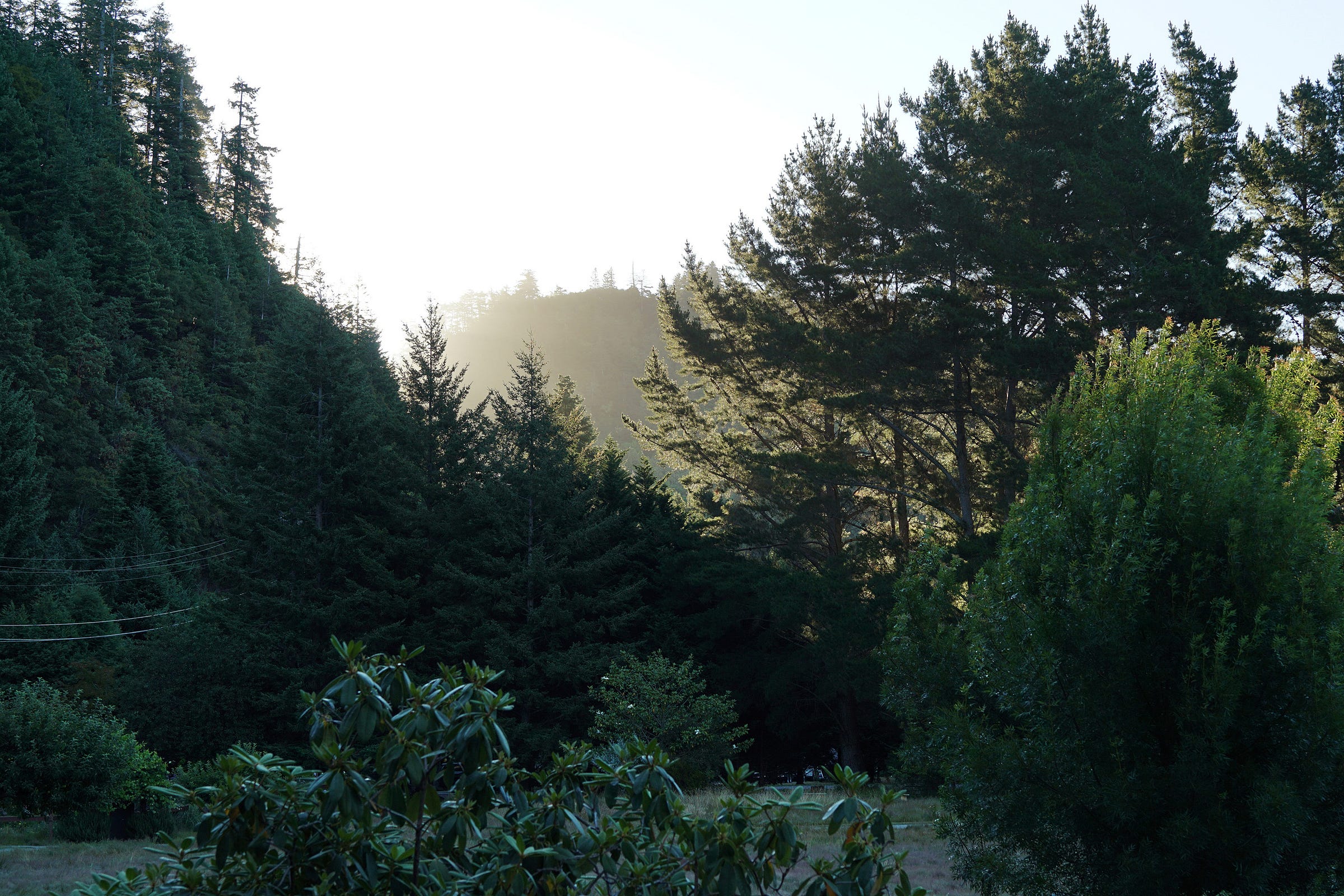Oregon's Lazy River
Issue 012: On the Rogue River, Tu Tu' Tun Lodge allows both its buildings and guests to disappear into nature.
Introduction
As much as I love the idea of relaxing, I find it very hard to switch off. When I’m doing nothing, my mind easily wanders and begins racing with ideas. I often get antsy wanting to explore new places and try new things. Maybe I have undiagnosed ADHD? Despite this, there comes a point every once in a while when I realize I really need to slow things down somewhat. And after an intense, stressful, whirlwind six months that started 2025, I needed a minute to recalibrate away from the city, and people altogether. I didn’t just want to touch grass; I desired to be surrounded by wildlife and next to water.
The timing of an invitation to a recently renovated, riverside lodge in Southwest Oregon couldn’t have been better. A solo trip that involved a lot of scenic driving, communing with nature, walks along pebbled shores, and baking in a sauna? It hit all the right notes. I accepted the fact that I wouldn’t unwind completely (I still had work to complete, and meetings to attend both on-property and virtually), but I knew that being in the Pacific time zone and having little to no cell service would definitely help. So once I arrived to the soothing presence of the Rogue River’s languid meander and gentle babbling, I gave myself permission to clear my head and slow heart rate down to an acceptable pace. For four days, at least.
Southwest Oregon
Of all the corners of the US I’ve visited so far, Southwest Oregon might be my favorite. The drive from Medford airport towards the Pacific coast took me through some spectacular scenery, along twisting roads that followed densely forested river gorges. Then once I hit the ocean, a stretch of dramatic coastline awaited, where huge chunks of rock sculpted by the wind and waves balance almost impossibly just off the beaches. The route passed down beside these craggy behemoths, then up to clifftop lookouts that offer aerial views over them—bay after headland, after bay.
This is a land of rivers that scamper impatiently between steep gorges before turning into wide, sedentary giants that slowly meandering through wide valleys as they reach their mouths. A land of Redwood trees older than most countries, thicker than shipping containers, and taller than skyscrapers, which can make any human feel insignificant. A land that meets the ocean in such powerful, cataclysmic fashion, where the clusters of enormous boulders explode out of the water. And all of this is often shrouded in a thick fog for extra dramatic effect. Strangely, there are very few high-end places to stay and experience this beauty. But luckily I had found one.
Tu Tu’ Tun Lodge
Positioned on a sweeping bend of the Rogue River, a 15-minute drive inland from where it meets the Pacific, Tu Tu’ Tun Lodge sits against a forested mountain backdrop and faces another across the wide, shallow water. The hotel’s elevated vantage on the hillside offers views that stretch along and around the valley. It’s not exactly in the wilderness, but it certainly does feel very remote. Aside from a tiny landing strip in nearby Gold Beach, the only way to get here from other parts of the country is to drive three hours from Medford (as I did), 3.5 hours from Eugene, or 5.5 hours from Portland. And other than a few RV parks, campsites, and cattle ranches, there’s not a whole lot else in the immediate vicinity.
Named after the Tututni Indigenous tribe that first inhabited the area, the original lodge was built in the 1970s and has retained the cozy, rustic charm specific to that era. Former Oregon vintner Charles Banks and his family bought the property a few years back, he told me over cocktails, and then purchased the adjacent lot that had previously hosted a trailer park. Due to the existing planning designation, the family were able to add a series of prefabricated cabins to the site to expand the accommodation offering, and tempt guests to this relatively undiscovered corner of the country with a fairly novel concept. During my stay, the demographic was mostly older couple and groups, and younger couples or friends celebrating anniversaries or birthdays—all who’d come to enjoy peace and quiet in nature.
Architecture & Design
The 1970s lodge building looks like a typical Pacific Northwest vacation outpost. A wooden A-frame forms the main structure, in which the reception, restaurant, bar, and lounge are located—all very “mountain mid-century.” A two-story block of guest rooms, designed in a similar log-cabin style, extends out to one side so that it too enjoys the best views of the river. These spaces were all updated as part of a recent renovation.
The property’s 12 prefabricated timber units designed by ÖÖD known as the Glass Cabins are definitely the biggest draw. These are wrapped with mirrored glass on three sides, are scattered across the site to enjoy either mountain, creek, or river views—find more details in my article for Dezeen. Simple yet striking, these reflective volumes disappear into the greenery or shine in the sunlight, depending on the weather and time of day. It’s a neat trick, and looks very effective. But many critics (i.e. Dezeen commenters) of mirrored buildings point out their potential harm to wildlife.
Guest Rooms
I was fortunate to stay in one of the Glass Cabins, which are each adorably named after a local bird species. Although my view was mostly of other cabins in front, it was still a pleasantly surreal experience to wake up to so much light, and to witness the fog draped over mountaintops behind. Each of these compact units sleeps two, though it wasn’t even a lot of space for just one, so prepare to get cozy!
It’s a slightly odd sensation being inside a container that you can see out of but others can’t see into, particularly whilst taking a shower or laying in bed (though there are curtains if you feel uncomfortable). Walking around at night, I did notice that the lights inside the cabins created silhouettes of the occupants—sort of like the shadow-play moments in the Austin Powers movies—so there’s definitely not total privacy. Also, the wifi signal in the room was effectively non-existent. Great if you need to be forced into a digital detox; not so helpful if you end up having to answer urgent emails or take calls.
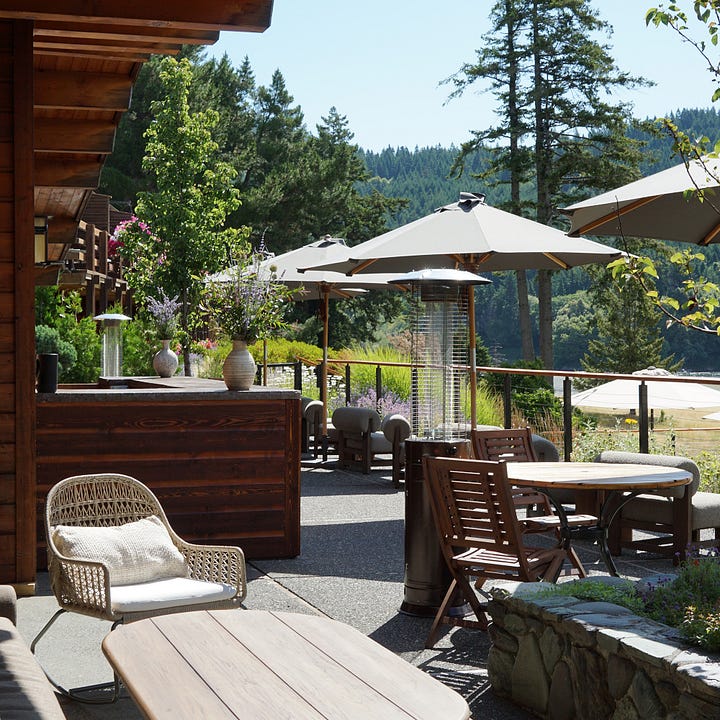
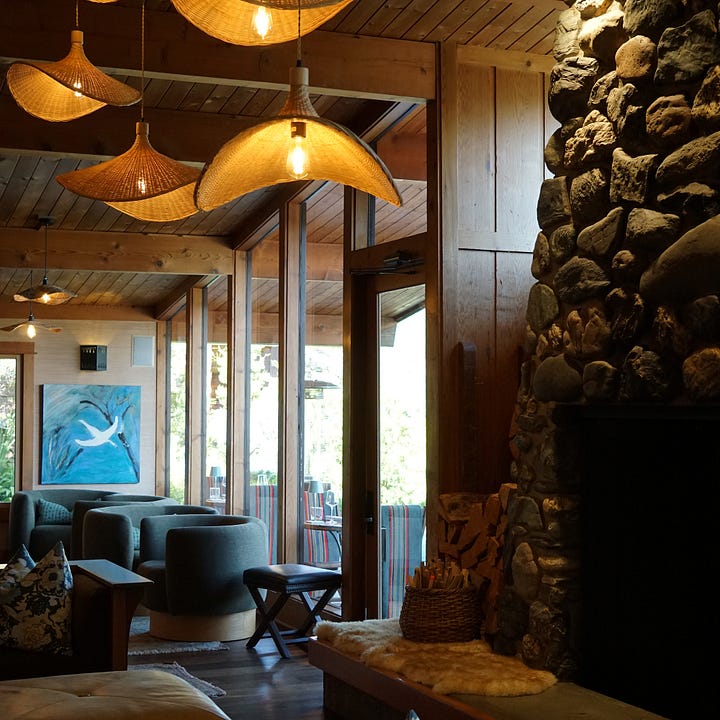
Dining & Drinking
Tu Tu’ Tun’s on-site restaurant is helmed by executive chef Derek Piva—who was behind several Tao Group hotspots—and operates a "wilderness to table" ethos that highlights Pacific Northwest farmers and businesses. Everything I ate was top-notch, from salmon with green curry sauce and a ginger salad for a kick, to French toast smothered in marshmallow and freeze-dried raspberries. But the most impressive dish was a rack of lamb on a bed of dried herbs that chef set on fire when it reached the table—so aromatic and perfectly charred.
Cocktails were equally innovative and delicious, best enjoyed on the terrace as the sun set. For those staying a few nights, be prepared to work your way through the food and drink menus, or repeat favorites, as other dining options in Gold Beach are “limited.” There is a spot called Groundling Pizza on the other side of the river, about a 15-minute drive away, which prepares yummy wood-fired pies in a no-frills, waterfront locale. But that’s about it.
Amenities & Activities
While my goal was to do nothing at Tu Tu’ Tun, and I mostly succeeded, there were a host of activities for those with more appetite for action—mostly revolving around the river. Guests can swim, take out canoes, or join one of the externally operated tour cruises from a jetty in front of the property. There’s also an outdoor pool and terrace right outside the main lodge for a less vigorous dip, and plenty of Adirondack chairs dotted around the grass in which to read or birdwatch (I saw several bald eagles).
Another smaller mirrored cabin houses a sauna, and is conveniently placed next to the river for those brave enough to partake in a natural cold plunge between sessions (I was not, though I did dip my toes in). The activities I enjoyed the most during my stay were the simplest: taking a phone-less walk along the river’s pebble beach, which was incredibly soothing, and exploring the nearby natural wonders of the Oregon coastline.
Oregon Coast
Along the Samuel H Boardman State Scenic Corridor is one of the most rugged, beautiful coastlines I’ve ever encountered. The drive along the ocean changes back and forth from towering cliffs to wide sweeping beaches every few miles, with the weather changing as quickly as the landscape. It could be sunny in one bay, only to find the next one cloaked in thick fog by the time you reach it.
In some places, the crashing waves have carved out huge arches and deep coves from the basalt. In others, massive hunks of rock are left standing lonely out to sea, and their scale is so much more impressive when viewed from the driftwood-scattered sands. There are plenty of overlooks and parking spots both high and low, and it was fun to hop down them one by one, and stop for a few minutes to marvel at the different rock formations. Since these stops are along the west, it’s easiest to pull in and out when driving north to south. My favorites were Meyers Creek, Arch Rock, and Natural Bridges, if you only have time for a few.
Redwood Forest
As soon as I learned that I’d be traveling through the Redwood forests on this trip, a pin was immediately put in my Google map so that I stop along the way. Technically over the California state line, but still along the main route 199 from Medford to the Oregon coast, the Jedediah Smith Redwoods State Park is a popular camping site. Several looping trails pass through the giant trees and run along the crystal-clear Smith River. Walking amongst these giants evokes a similar awe as passing through Midtown Manhattan for the first time. Except there’s no noise other than the rustling of leaves and chirping of birds, and the notion of being small is so much more exaggerated because the giants are of Mother Nature’s making, not man’s.
Note: Doubling the luck, I visited another Redwood grove during an August trip to Sea Ranch, further south down the California coast. I therefore dubbed 2025 my Red Hot Redwood Summer, and I’ll remember it forever.
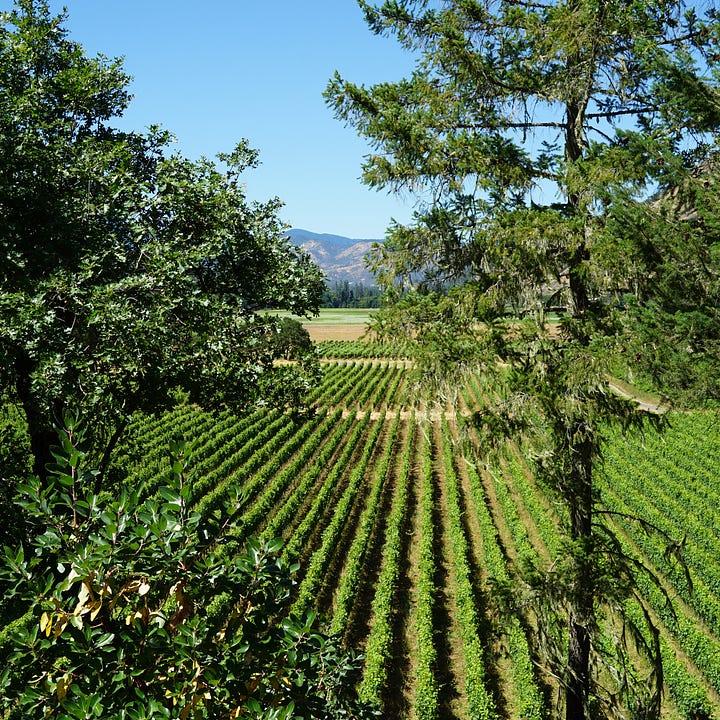
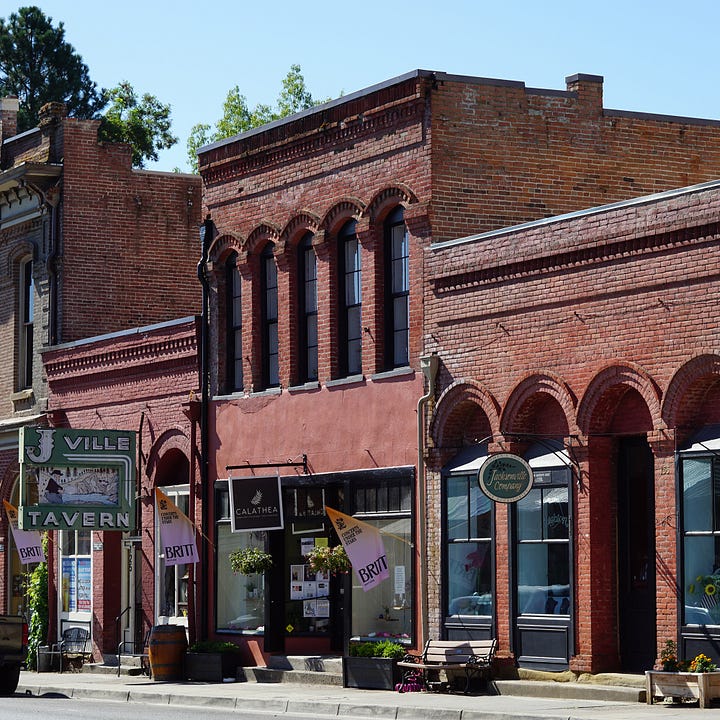
Cowhorn & Jacksonville
To cap off this trip, I made a stop on the journey back at Cowhorn, the Banks family’s vineyard in the Applegate Valley. While the Willamette Valley is Oregon’s better-known wine region, this area is also home to an impressive number of producers. Cowhorn primarily grows and sells biodynamic Rhône varietals, including Viognier, Marsanne Rousanne, Grenache, Syrah, and Pinot Noir, as well as several blends. The winery itself is set in a picturesque valley, and has a tasting room and garden right beside the vines, where visitors can pair their flights with wood-fired pizza. I stayed overnight at The Overlook, a new construction up the hill that can be rented by groups, and has a gorgeous covered terrace that benefits from its elevated position over the vineyard.
Cowhorn also operates a small restaurant in Jacksonville, a historic gold-mining town 20 minutes north of the vineyard—not far from Medford where I began this trip. Here, diners can sample the estate’s various wines with complementary dishes, which were . I had a carrot four ways appetizer and a lime sorbet that blew my mind. The town of Jacksonville was surprisingly very charming, with its main street that looks straight out of a Western movie. Its center is listed on the National Historic Register, and there are a handful of cute cafes, saloon-style bars, and gift shops to entertain visitors.
Ending the journey here, I was gently eased back into the real world after filling my cup with the wildlife and water I was craving. I did manage to switch-off and relax after all, and it was because I was able to disappear into one of the most beautiful yet relatively undiscovered parts of the US. So let’s keep it our secret, shall we?
Thank Yous
Many thanks to Halle Lipov and Lily Daniel from Mona Creative for the invitation, booking my flights, and coordinating my stays at Tu Tu’ Tun and Cowhorn. Thanks to Charles Banks, Mini Byers, and their extended friends and family for welcoming and entertaining me so warmly. And the Tu Tu’ Team, particularly restaurant manager Hannah, thanks all so much for your genuine hospitality. D x



